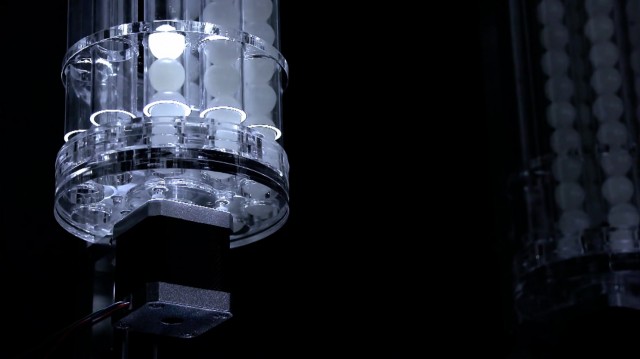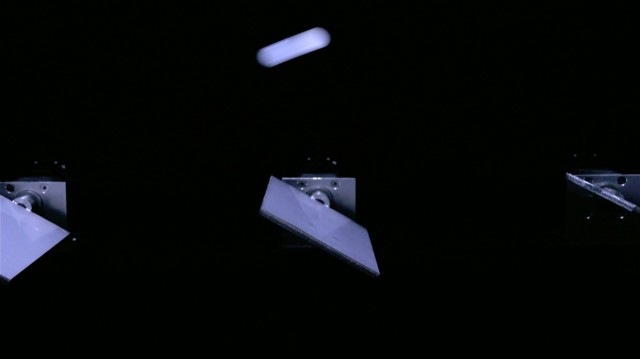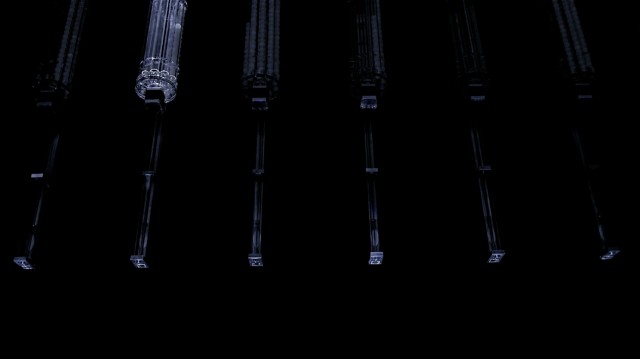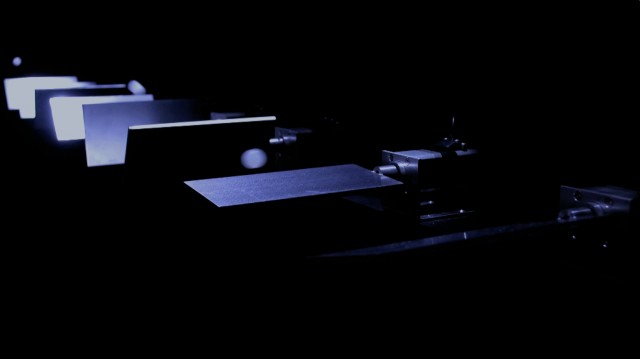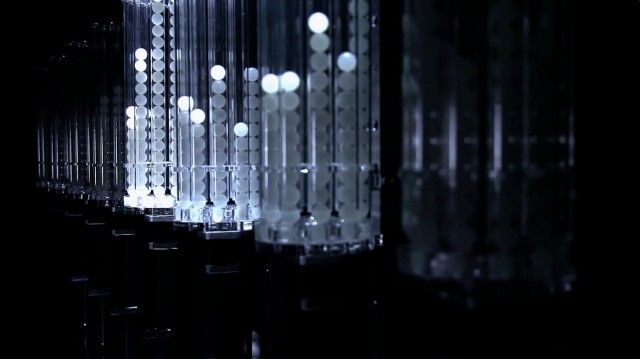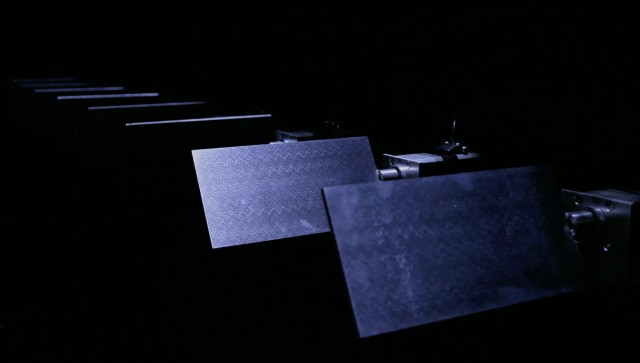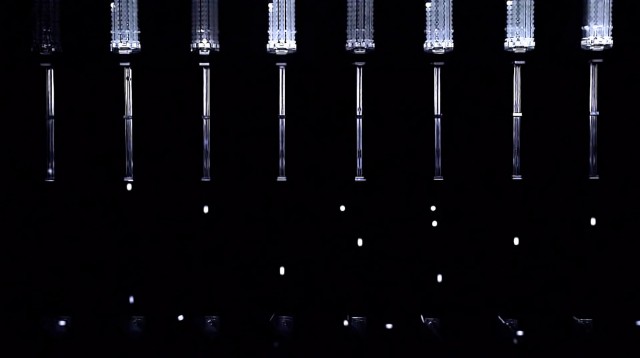
Fresh, sparkling, and minimal, Timo Maas’ music might already suggest balletic pirouettes by a chorus of machines. But our friend Daito Manabe has executed yet another opus – this time, making the music video kinetic.
In “Tantra,” Japan’s Daito turns to the delicate tumbles of lit-up balls against robotic panels. Keep watching, as eventually you’ll see it all in slow motion, perhaps the nicest moment of the piece. The suggestive play of robotic repetition with some organic outcome fits this sort of dance music perfectly, it seems.
Daito has gradually built up a body of work like this, from appearing on this site in its early days with a vibrating chaise longue controller by a turntable to making music by electric stimulation of his face, to bending tennis shoes to play samples.
The team here also includes:
Hardware engineer: Motoi Ishibashi
Video director: Muryo Homma
Installation designer: Youichi Sakamoto
And the ingredients, all Arduino-controlled kinetic sculpture:
- Arduino-controlled ball dispensers
- motorized rotating steel plates
- LED lights for filming
The creative team explains:
‘Tantra’ was then deconstructed into MIDI parts (the computer code that runs the synths, drum machines and samplers in the musical composition), the data that specified notation, pitch and velocity, control signals for parameters such as volume, vibrato, audio panning, and cues from were then run through the machine to control its movement.
“The first time I listened to ‘Tantra’, I imagined someone producing something endlessly in a base, deep underground. With this image in mind, we started testing different machines, systems and so on, and then we finally figured out the structure and how we’d control the machine – and the motion of the balls – with the music. We felt that this would give it a sense of reality and beauty that is impossible to realize with CGI.
“Post-digital” is a popular term for this, but this is, after all, digital technology. What it is is post-virtual, digital tech being made for more than just computer displays, playing with physical objects. It’s digital tech made a more fluid part of a larger environment, rather than treated in isolation (as generative, demoscene-style animations might be). It’s the digital grown pervasive.
You can find the EP on Beatport, and XLR8R has the remix by Tom Demac as a free download.
More on Timo Maas:
http://www.timomaas.com/
and Daito Manabe:
http://daito.ws/
